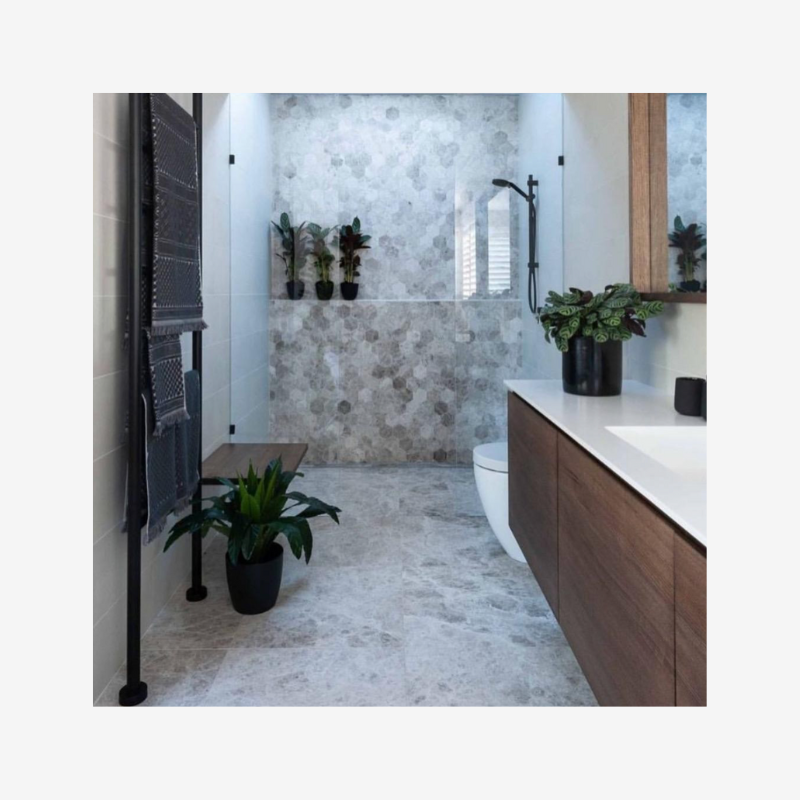
Transforming your bathroom delivers one of the highest satisfaction returns in home improvement. A well-executed renovation creates a personal sanctuary while boosting your property’s appeal. However, costs can spiral alarmingly without careful management. Plumbing surprises, material inflation, and design changes often derail budgets. The great news? Achieving a stunning bathroom makeover absolutely doesn’t require limitless funds. Strategic planning, clever material choices, and selective effort make dramatic savings achievable. Let’s explore proven methods for controlling expenses without sacrificing style or quality.
1. Strategic Planning Foundations
Establishing a clear budget is your essential first step. This financial framework guides every subsequent decision. Be specific about what you can spend on labour, materials, and unexpected issues. Why is this crucial? Without boundaries, impulse purchases can derail your project.
Sketch your ideal layout early. Consider how you use the space daily. Where should towels hang? How much storage is needed? These practical questions prevent costly changes later.
Seek multiple quotes from local tradespeople. Compare their timelines and material suggestions. Invest in quality where it matters most. Durable tapware or countertops offer long-term value. Save on decorative elements like paint colours or affordable bathroom tile accents in Australia. This balanced approach maintains financial control.
2. Material Selection Wisdom
Material selections heavily influence overall spend. Smart choices deliver high visual impact without premium price tags.
- Tile Tactics: Porcelain remains the budget champion. Modern digital printing creates convincing stone, timber, or concrete effects at a fraction of the cost. Consider limiting feature tiles to key splashbacks only. Standard square formats are cheaper than intricate mosaics or large-format slabs requiring specialist installation. Explore end-of-line sales for significant discounts on quality stock.You’ll be amazed how far creative bathroom tile choices can stretch your design impact.
- Countertop Considerations: Laminated finishes offer vast style improvements over dated acrylics at modest prices. Butcher block timber (properly sealed) brings warmth economically. If craving stone, explore remnant pieces from stone yards , perfect for smaller vanity tops.
- Vanity Versatility: Flat-pack vanities offer surprising quality and style diversity. Look for soft-close hardware and durable finishes. Alternatively, refresh your existing cabinet: new doors, quality paint, and stylish handles work wonders. Consider freestanding furniture repurposed as vanities for unique character.
- Fixture Focus: Chrome remains the most affordable and durable tapware finish. Look for Water Efficiency Labelling and Standards (WELS) rated products , they save water and money long-term. Consider reputable mid-range brands rather than luxury imports. Bundled suites (tap, shower, waste) often cost less than individual pieces.
- Lighting Leverage: Update existing fittings with new shades or globes. Simple recessed downlights provide excellent illumination affordably. Consider IP-rated options for wet zones instead of expensive specialist bathroom fixtures if placement allows.
3. DIY Opportunities and Limits
Handling manageable tasks yourself reduces labour costs substantially. Always engage licensed professionals for plumbing and electrical work though. Where can you safely contribute?
Demolition work requires effort rather than expertise. Remove old tiles or cabinets carefully. Check for asbestos in homes built before 1990. Painting transforms spaces dramatically. Use mould-resistant formulas specifically for bathrooms. Update fixtures like towel rails or mirrors using online tutorials.
Leave complex bathroom tile work to specialists.Why? Poor installation causes leaks and costly repairs. Waterproofing is another expert-only task. Incorrect sealing risks structural damage.
4. Resourceful Repurposing
Existing elements often hold hidden potential. Creative reuse slashes material costs dramatically.
- Cabinet Revival: As mentioned, painting or re-laminating doors transforms vanities. New handles provide instant uplift. Internal organisers maximise existing storage.
- Fixture Facelifts: Reglazing chipped baths or basins is far cheaper than replacement. Rechroming worn tapware restores shine. Consider replacing only showerheads for a fresh feel.
- Tile Transformation: Specialised tile paints offer a viable refresh for sound, dated wall tiles. Re-grouting in a modern colour revitalises entire spaces. Carefully removing salvageable tiles during demolition for patching saves buying new boxes.
- Salvage & Second-Hand Gold: Explore architectural salvage yards and online marketplaces (Gumtree, Facebook Marketplace). Vintage taps, solid timber vanities, unique mirrors, and even quality tiles appear frequently. Ensure plumbing compatibility and check for damage. Negotiation is key!
- Hardware Heritage: Existing door handles, towel rails, or hooks can be cleaned, polished, or spray-painted to coordinate with your new scheme.
5. Savvy Shopping Approaches
Timing and negotiation stretch your budget further. Major retailers discount displays during financial year-end sales. Subscribe to supplier newsletters for exclusive offers. Consider bundle deals on tapware sets rather than individual pieces.
Reuse centres like The Bower offer remarkable finds. Ex-display vanities often have minor scratches easily concealed. Bathroom tile clearance lots provide designer looks at reduced prices. Always request samples before committing to materials. Natural lighting affects how colours appear in your space.
6. Timing and Project Management
Schedule demolition during drier months (October-April). Wet weather delays trades and risks water damage. Order materials well ahead of your start date. Supply chain issues sometimes cause unexpected delays.
Phase your project where possible. Complete demolition and structural work first. Then pause for flooring or countertop installations. This approach spreads costs over several pay cycles. Communicate clearly with your tradespeople. Regular updates prevent misunderstandings and budget overruns.
7. Sustainability Savings
Eco-friendly choices often reduce expenses. Water-efficient taps lower utility bills long-term. LED lighting consumes less electricity while lasting years longer. Proper insulation prevents heat loss during baths or showers.
Salvaged materials carry environmental benefits too. Reclaimed timber reduces landfill contributions. Recycled glass tiles conserve manufacturing energy. These choices frequently come with interesting histories. That salvaged clawfoot bath might be older than your house!
Final Considerations
Successful renovations balance dreams with practical realities. Why break the bank when creativity achieves similar results? Prioritise changes that improve daily living. A well-planned shower layout matters more than gold-plated taps.
Remember your local community resources. Neighbourhood Facebook groups often advertise leftover building materials. Trade schools sometimes offer discounted labour for simple tasks. With thoughtful planning and these practical strategies, your dream bathroom becomes beautifully achievable. Ready to begin sketching your transformation? Visit Dream Tiles to start planning your renovation.

